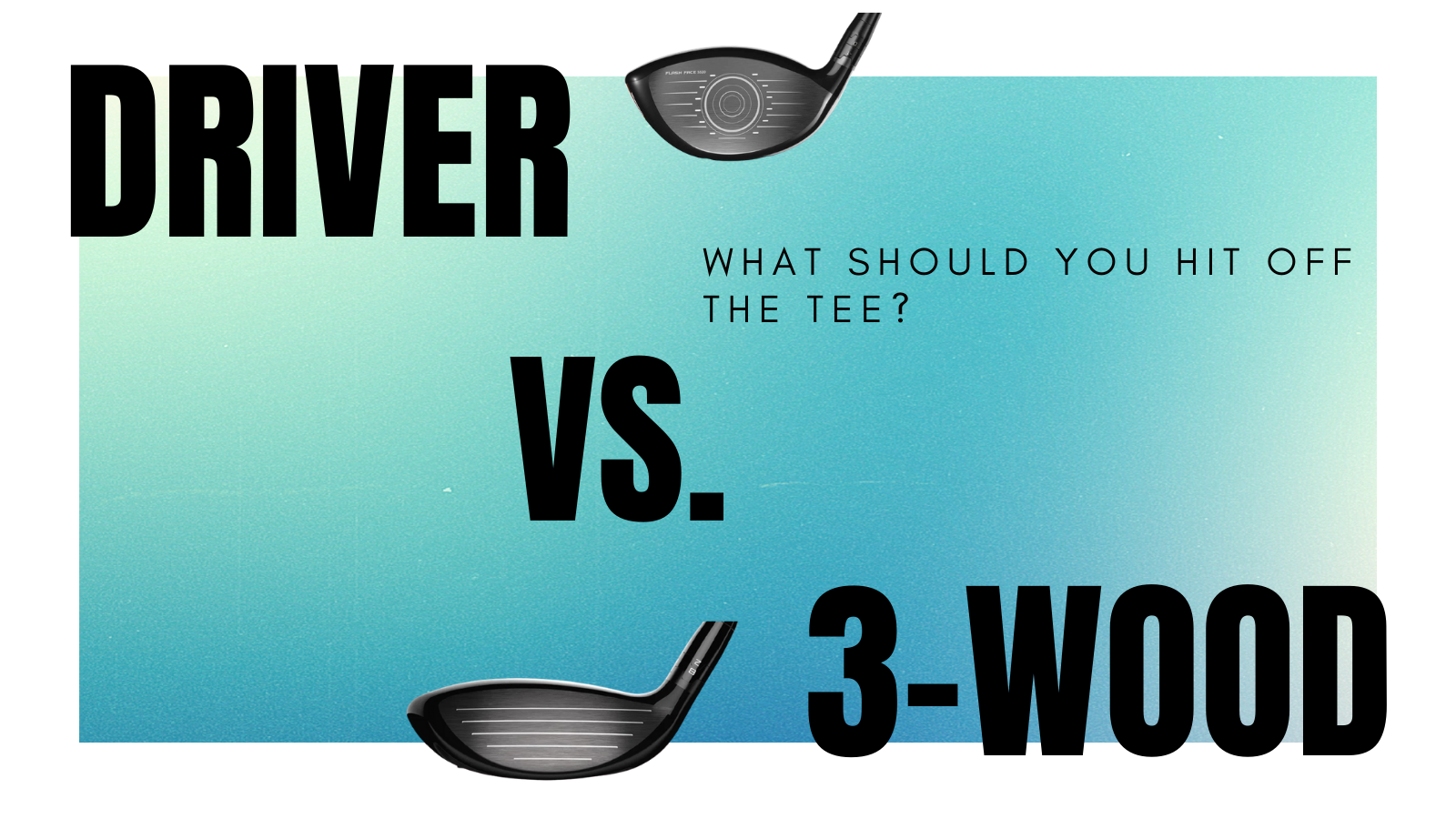
When faced with a difficult hole, golfers often decide between hitting their driver or 3-wood. The conventional wisdom is that taking a shorter club will result in more accuracy and give you a better chance of posting a lower score. However, with modern analytics, we are starting to discover that many assumptions we've made about the game are just not right.
In this article, I'm going to share with you the following:
- Data from millions of golf shots comparing drivers to 3-woods from Shot Scope
- Thoughts from an equipment expert
- My launch monitor testing
- Some advice on how to help you make better decisions
I think many of you will be surprised by the results!
Shot Scope Data
Performance-tracking companies have helped dispel a lot of myths over the past few years.
Shot Scope, a Scotland-based company, has a popular GPS tracking system used by thousands of golfers worldwide. As a benefit, they can spot trends in their database based on millions of golf shots (you can read my review of their V3 system here).
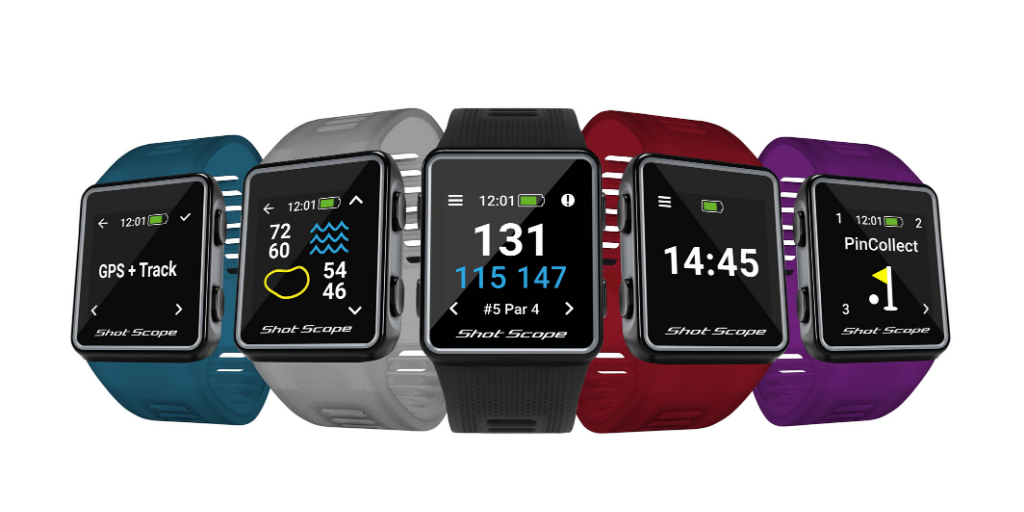
Recently, I got a hold of their findings on golfers' use of driver off the tee versus their 3-wood. The conclusions are interesting and dispel some commonly-held beliefs about accuracy.
The first table explores how far golfers hit each club by handicap level:
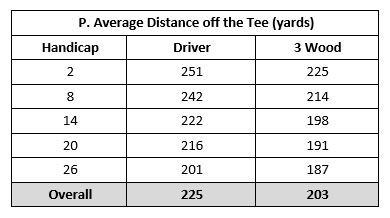
On the whole, you can see that at every handicap level, golfers are giving up distance with a fairway wood off the tee—nothing surprising there.
Here's where things get interesting. Let's take a look at fairways hit:
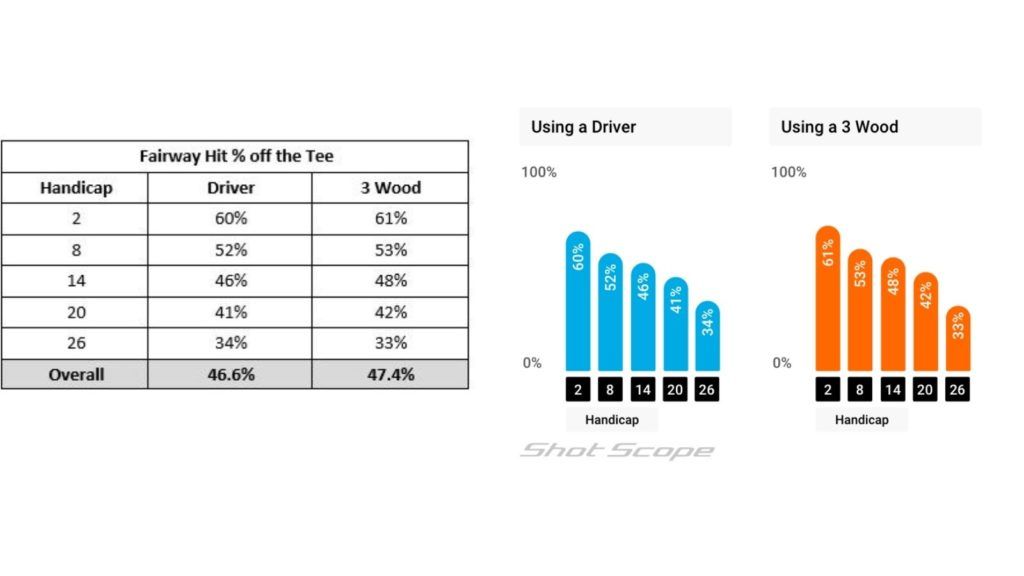
At every handicap level, golfers were only able to hit about 1% more fairways with their 3-woods versus their driver. You would think if fairway woods were that much more accurate off the tee, the number would be significantly larger.
And now, we can arrive at the critical calculation. If golfers are not more accurate with 3-wood but are giving up anywhere between 20-30 yards in distance off the tee, they are making it harder to score. I've used this image before from Shot Scope, and I think it's worth another look. When you sacrifice about 30 yards off the tee, you lose almost 1/3 of a stroke per hole. That adds up!
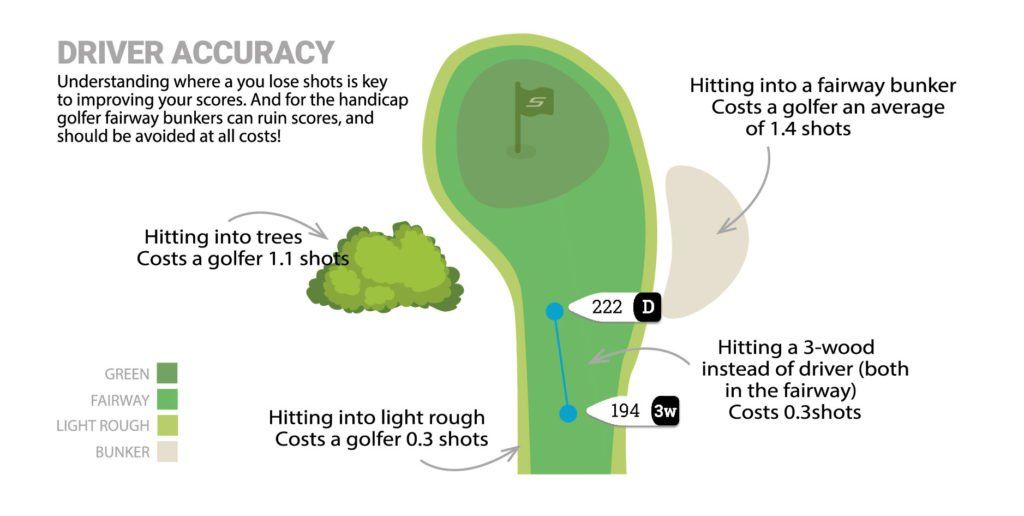
One last point I'll make is that hitting into the light rough is not as significant a penalty as most assume. It's worth the equivalent in distance between the two clubs. That is why I've written before that sometimes golfers overvalue the importance of hitting fairways.
As a whole, we have been focusing too much on lateral dispersion (left to right), and not taking into account distance as much as we should have.
Thoughts From an Equipment Expert
Understanding the fundamental differences between a driver and fairway wood is also essential. Every golf club has tradeoffs in performance, and it's part of the reason we see the trends in the data.
Luckily, I'm good friends with one of the top clubfitting experts in the industry - Woody Lashen, the co-owner of Pete's Golf in Mineola, NY.
When I shared the Shot Scope results with Woody, he wasn't all that surprised. Based on his knowledge of how each club is designed, and the results he sees daily in fittings, he believes that a 3-wood is no more accurate than a driver when used off the tee. One of the reasons is that fairway woods are not designed to be exclusively used off the tee. When they fit golfers, their primary goal is to have a fairway wood that performs effectively when used on approach shots, which is what the club is mostly designed to do. However, he cautioned that there are exceptions, which I'll get to later in this article.
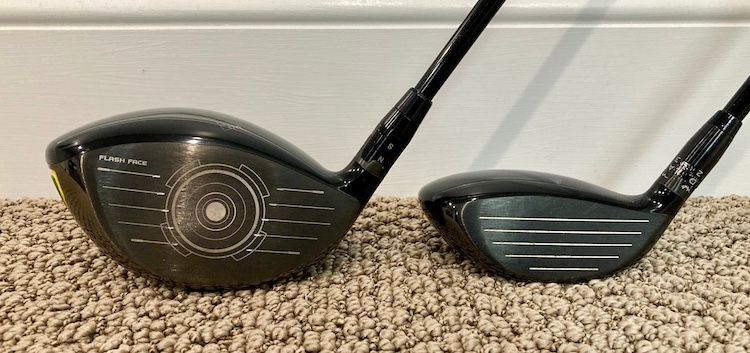
From a design perspective, Woody spoke to me about the concept of strike patterns and MOI. Moment of Inertia (MOI) is a term you'll often hear when describing how "forgiving" a golf club is. Without getting too complicated, MOI measures how resistant a golf club is to twisting at impact. When a golfer misses the center of the face and hits the toe or heel of the club, the clubface will twist open or closed. The result is twofold - the ball with travel farther offline (due to gear effect) and lose distance.
Woody told me that most modern drivers have about 2-3 times the amount of MOI compared to a 3-wood. That means that when a golfer fails to hit the sweet spot, a driver can help the ball travel farther and straighter. When you factor in the smaller face of a fairway wood, and golfers who generally struggle to strike it consistently, it's not a surprise that a driver can produce straighter shots overall (or equivalent) off the tee.
Another concept that Woody spoke about is dynamic loft. Generally speaking, when you have more dynamic loft at impact, it helps produce a straighter golf shot. While he hasn't tested extensively, his suspicion has always been that a driver and 3-wood have a very similar dynamic loft at impact when used off the tee.
Overall, Woody (like me) always urges golfers to test. Some players could hit a 3-wood straighter off the tee than their driver, but based on his experience, that golfer is an exception to general trends.
My Testing
To give all of you more context, I decided to put my fairway wood against my driver. I've been custom-fit for both clubs (by Woody Lashen), so the shaft/head combinations are optimal for my swing. My results won't necessarily indicate what you would experience, but my goal is to get you to experiment on your own and figure out the answers in your golf game. You can also check out my testing on irons versus my driver in this article.
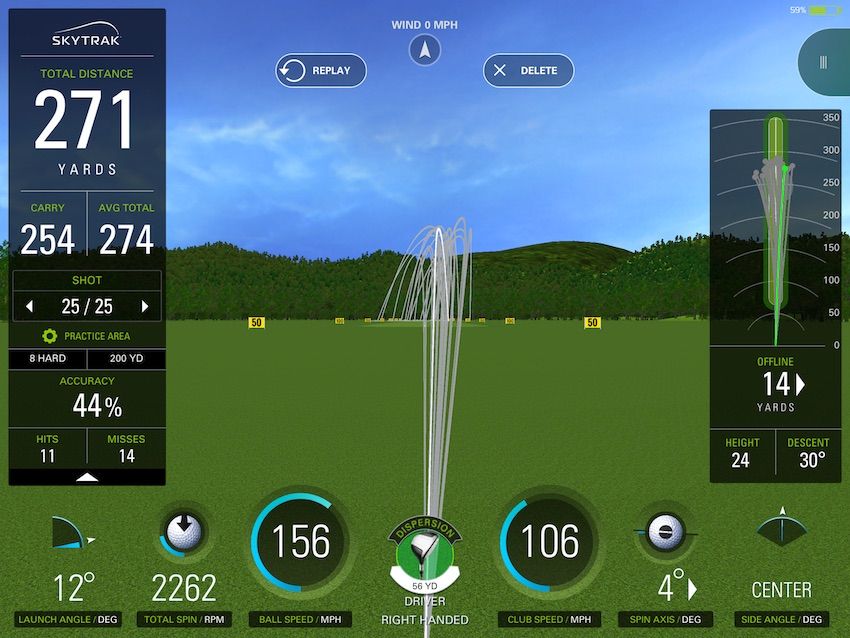
For the test, I set up a very difficult fairway on my launch monitor. I also set the turf conditions to firm to be even more challenging to hold a ball in the fairway. I hit 25 shots each with my driver and 3-wood. Currently, my handicap index is a +.3, and I consider myself an above-average ball striker.
I'm paying attention to the following data:
- Percentage of fairways
- The total dispersion of my shots from left-to-right
- Typical distances for each club when I hit the fairway or miss it
Fairway Wood Results
Here are my pertinent stats with my fairway wood:
- I hit the fairway 36% of the time
- My average total distance was 243 yards
- Total dispersion left to right was 72 yards
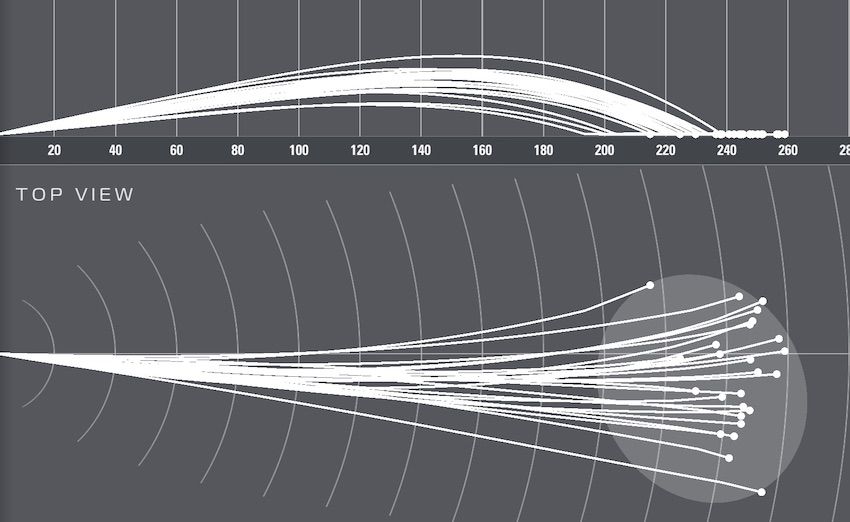
Overall, I'd say these results are pretty poor. The one thing I noticed is that my mishits with my fairway wood suffered quite a bit in terms of distance and accuracy. When I did miss a fairway, some shots went only about 225 - 230 yards total. If you look at my dispersion in both directions, it was more erratic than my driver - a couple of major "foul balls."
Driver Results
Here's where things got interesting. You would assume that my fairway wood would be more accurate than my driver, but it wasn't the case.
Here are my driver stats:
- I hit the fairway 44% of the time
- My average total distance was 274 yards
- Total dispersion left to right was 57 yards
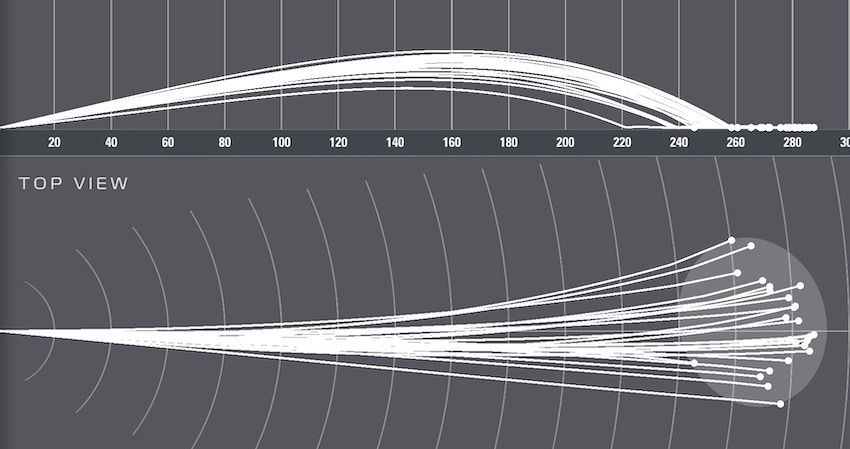
It wasn't a surprise that my driver went about 30 yards farther than my 3-wood, but my dispersion was tighter, and I could hit more fairways. Usually, when I do these tests, my driver dispersion is about 65 yards, so I would say this is an above-average session, but I didn't see any evidence that my fairway wood could outperform on accuracy.
As a reminder, you might see different results. But I would say these are consistent with what I notice on the golf course. Generally speaking, I only use my fairway wood off the tee when I am looking to decrease my distance (if the driver would bring penalty areas or other big trouble into play). I believe this is a strategy most golfers should employ as well.
What Can You Learn From All of This?
The aggregate data from Shot Scope and my launch monitor results paint a reasonably clear picture. Hitting a fairway wood off the tee does not seem to produce more accuracy, and combined with the loss of distance, it doesn't seem like the right strategic play. You have to take into account the loss of distance and weigh that against your left-to-right dispersion.
However, every golfer is unique. You all have different tendencies with each club in your bag. You might be more erratic with your driver, and a 3-wood could keep you out of big trouble. The goal of this article is two-fold:
- Bust commonly-held myths
- Get you to find out your tendencies
Often, our memories and the truth don't match up very well. You might assume trends in your game are accurate based on what others have told you, or based on your hazy memory of rounds. This is where performance-tracking comes in handy.
Using a system like Shot Scope to track all of your shots can reveal trends in your games. You might find the same results - that your driver is more accurate than you think, and your fairway wood is not the solution on difficult tee shots. Or it could be the opposite. You won't know until you gather enough rounds to see your trends.
Launch monitors can also benchmark your performance to give you more information to make smarter decisions. More and more teaching golf professionals are offering these sessions to golfers to figure out trends amongst their clubs.
If you're interested in discussing further, join the conversation in this thread in our new community.
We care about the protection of your data Read our Privacy Policy